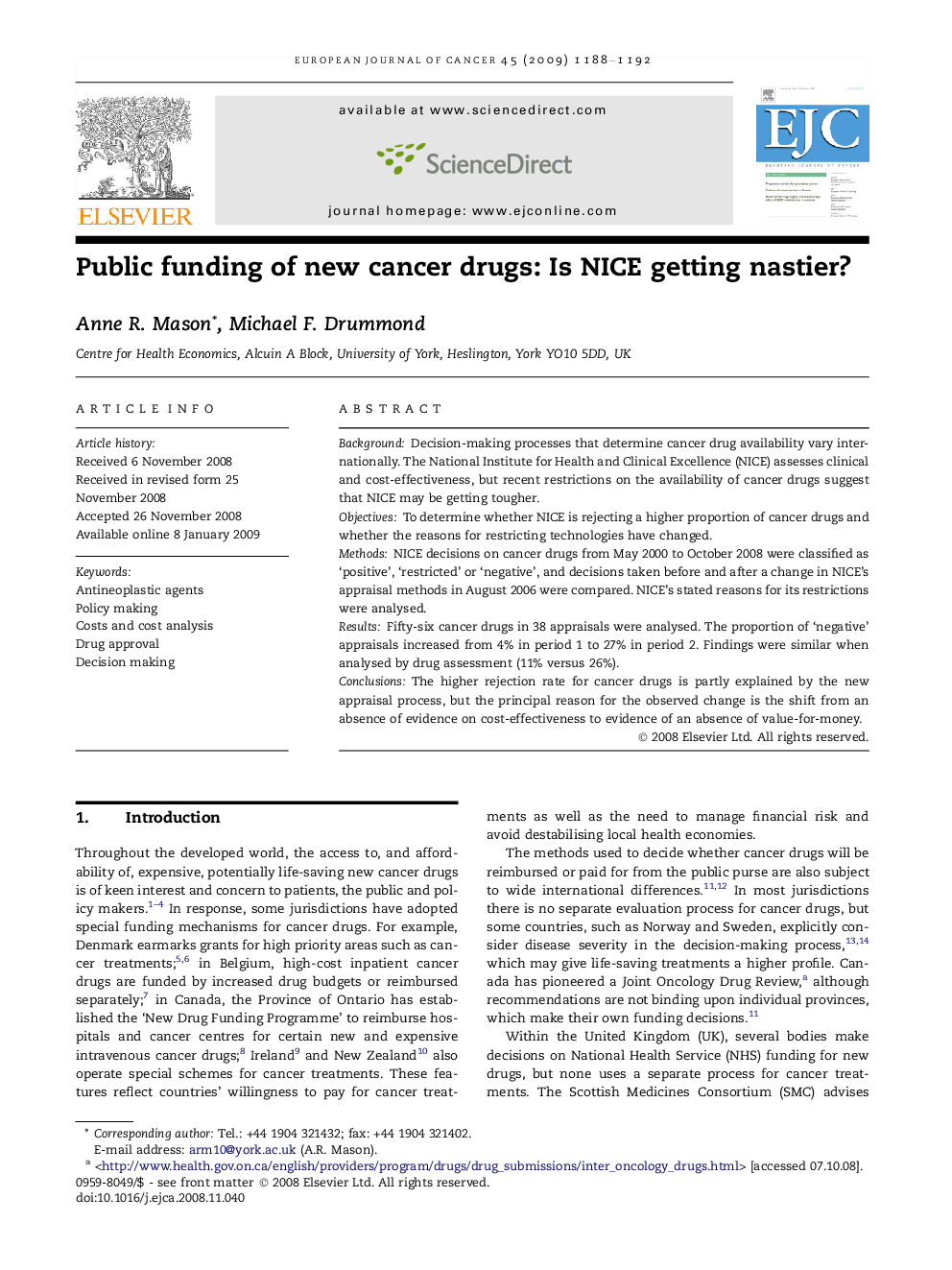| Article ID | Journal | Published Year | Pages | File Type |
|---|---|---|---|---|
| 2125444 | European Journal of Cancer | 2009 | 5 Pages |
BackgroundDecision-making processes that determine cancer drug availability vary internationally. The National Institute for Health and Clinical Excellence (NICE) assesses clinical and cost-effectiveness, but recent restrictions on the availability of cancer drugs suggest that NICE may be getting tougher.ObjectivesTo determine whether NICE is rejecting a higher proportion of cancer drugs and whether the reasons for restricting technologies have changed.MethodsNICE decisions on cancer drugs from May 2000 to October 2008 were classified as ‘positive’, ‘restricted’ or ‘negative’, and decisions taken before and after a change in NICE’s appraisal methods in August 2006 were compared. NICE’s stated reasons for its restrictions were analysed.ResultsFifty-six cancer drugs in 38 appraisals were analysed. The proportion of ‘negative’ appraisals increased from 4% in period 1 to 27% in period 2. Findings were similar when analysed by drug assessment (11% versus 26%).ConclusionsThe higher rejection rate for cancer drugs is partly explained by the new appraisal process, but the principal reason for the observed change is the shift from an absence of evidence on cost-effectiveness to evidence of an absence of value-for-money.
